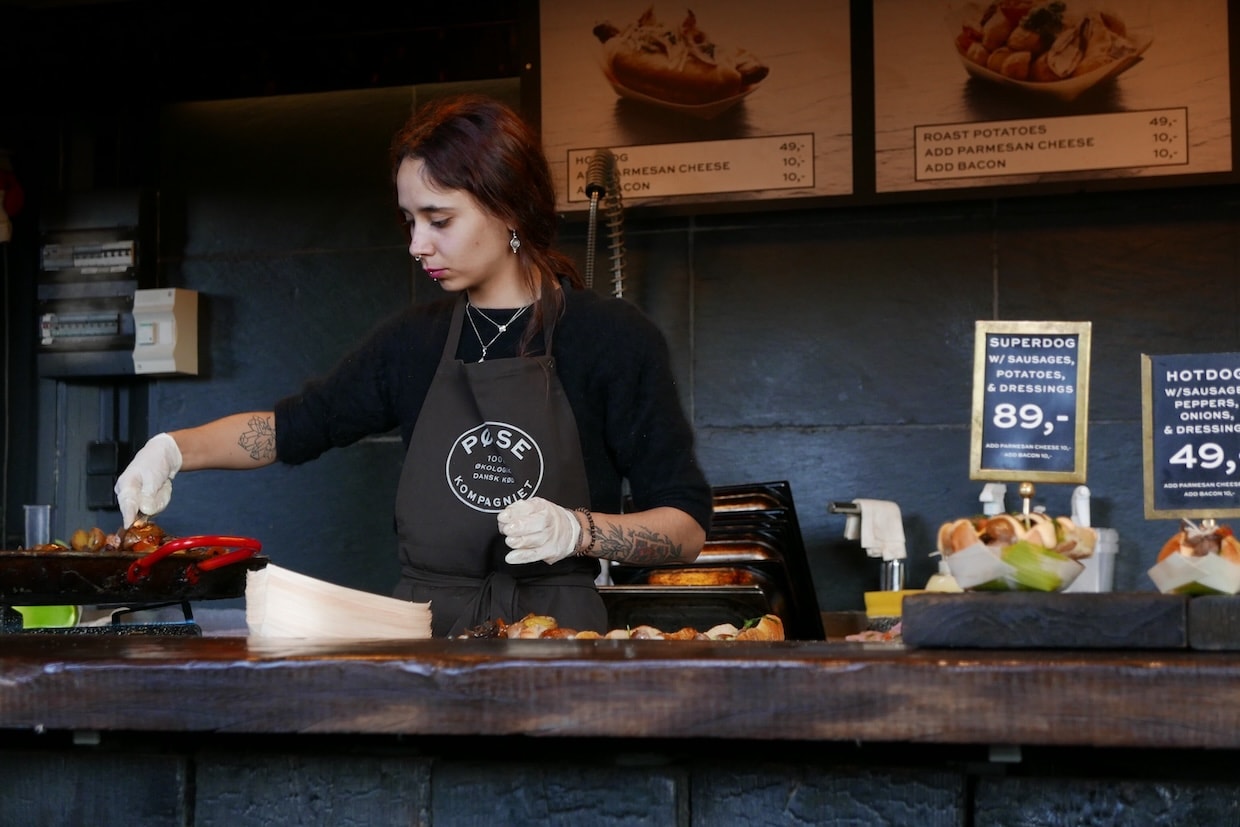5 Tips to Improve the Sustainability of Your Restaurant
Why sustainability is often a challenge in the hospitality industry and 5 easy changes to help make your own business more sustainable.
Mastering key metrics in the hospitality industry is essential to effectively managing a successful and customer-centric business. Let us guide you through the process.

Do you know what the key business parameters are in the hospitality industry? Well, numbers are not just numbers: they are the heartbeat of a successful restaurant. Every week, they reveal secrets that determine the health of your business. From precise inventory management to the ideal number of guests, from culinary delights to generated revenue, these and other business metrics make up the recipe for your business.
It's not only about knowing those numbers, but also about interpreting them correctly. With targeted controlling, intelligent business management and clever evaluation of your data, you can actively shape the goals for your success.
Here is our list of key figures, which we'll talk about in this post:
I. The power of key business figures
II. Labor costs
III. Pricing and profitability
IV. Revenue
V. Sales forecasting and planning
VI. Profitability analysis
In the world of hospitality, it's not just about creating delicious food, it's also about being efficient and planning wisely. Business analysis and key performance indicators (KPIs) are the tools that help define success.
This tool is crucial for understanding the numbers that matter in any industry. The business analysis gives you a detailed view of your finances, helping you identify areas that need improvement and ways to make things better. After all, making smart decisions starts with having clear information.
KPIs are critical to measuring business success. KPIs not only show the status quo, but also help identify opportunities and improvements. In this way, KPIs lead the way to strategic action for your restaurant.
Costs associated with your staff are more than just numbers on a spreadsheet. They play a crucial role in the success of your business and the quality of service you provide to your guests. The way you strategically manage your staff resources and plan your staffing directly impacts the overall guest experience.
When you analyze staff costs as a percentage of your overall expenses, you gain insights into your cost structure. This key figure tells you how much of your revenue goes towards paying your staff. Calculating this precisely will help you assess and optimize your personnel budget effectively.
Every member of your team matters. Employee effectiveness measures how well your staff perform their tasks. It depends on several factors:
Paying attention to these factors not only enhances the quality of your service but also boosts customer satisfaction within your business.
Ideally, you want to keep your employee turnover rate low. If it's too high, it's time to take a look at your people management practices. Investing in retention strategies definitely pays off. Creating a positive work environment, appreciative communication, and offering incentives are proven ways to increase employee satisfaction and reduce turnover.
Good planning, careful calculation of labor hours and labor costs, and maintaining a positive relationship with your co-workers can keep labor costs low in your restaurant. This is the key to long-term success in the restaurant business.
Sound pricing is essential for sustainable profitability in the hospitality industry. Factors such as contribution margin, cost of goods, and consumption of goods play a critical role.
Whether you run a restaurant or any other food service business, it's important to understand the costs associated with preparing food. This includes not only the obvious costs, such as the ingredients used in your dishes, but also the hidden costs, such as storage and preparation.
Having a clear understanding of your expenses helps you set reasonable prices for your menu items. With the right tools, you can also free up valuable time for other important tasks.
To determine the profitability of your orders, it's common to calculate the cost per customer. This involves breaking down the cost of each meal in relation to the revenue it generates. This approach allows you to fine-tune your menu to ensure both customer satisfaction and financial success.
Food waste and how you handle it can have a significant impact on your foodservice profitability. A thoughtful approach to minimizing waste in the kitchen can contribute to the long-term success of your foodservice operation and even lead to lower food prices.
There are helpful tools available for predicting food consumption and tracking waste. While it may be a small challenge for restaurant management, it serves as an indicator of improved customer satisfaction.

Finding the perfect pricing strategy is essential, and it goes hand in hand with keeping a close eye on your expenses. To ensure your business thrives and remains sustainable, it's vital to have a clear grasp of your costs and analyze the profitability of every dish you offer.
Occasionally, the issue may stem from portion sizes or recipes that are not well-balanced. Fortunately, there are restaurant software solutions available to lend a helping hand. These tools can assist you with inventory management and streamline your operations. With menu management features, you can easily track product costs and portion sizes, making it a breeze to make informed decisions that benefit your business.
In addition to the KPIs mentioned above, revenue is another important business metric to keep an eye on in the hospitality industry. Revenue essentially shows how well your business is doing financially. It's important to carefully analyze your sales figures and have a strategic sales forecast in place.
Sales volume tells you how much of your products or services you've actually sold. This information gives you insight into which dishes or services are popular with your customers and allows you to tailor your offerings to their preferences.
Reviewing your daily sales on a regular basis is essential for spotting trends. This analysis helps you respond quickly to changes in sales expectations and make necessary adjustments to your business strategy.
Efficient use of resources is also reflected in revenue per employee. This metric helps you understand the relationship between your revenue and your human resources. It can be a valuable tool for identifying areas where you can optimize your operations.
Remember, net sales are more than just a number; they're a measure of the success of your restaurant business. By closely tracking your sales volume, monitoring daily sales, and evaluating sales per employee, you can effectively manage your financial performance and lay the groundwork for sustainable growth.
Let's take a look at the future. To ensure your restaurant's continued success, it's important to have a top-notch menu and a sales forecasting strategy.
When you delve into past sales data, you're essentially building a solid platform for more accurate sales forecasting. These predictions will play a significant role in shaping your day-to-day operations.
The importance of accurate sales forecasts cannot be overstated. They are the key to effective budgeting and resource allocation. With a reliable sales forecast, you can allocate your resources strategically, ensure that you can meet increased demand without running into supply issues, and keep your customers happy.

Having a fantastic selection of products can attract more traffic to your store, which is great. However, it can also be a bit of a challenge to efficiently manage busy times. But with a clear understanding of expected demand, you can better plan your staff schedules and make sure you meet your customers' needs during those busy times. That's why it's important to keep an eye on your sales forecasts at all times.
Analyzing and forecasting sales is much more than just an educated guess. It's a valuable tool for running your business smoothly and giving your customers the best possible experience. By using accurate sales forecasting wisely, you can set the stage for long-term success in your restaurant business.
An effective profit margin plays a critical role in ensuring the long-term success of your business. By taking a close look at your profitability, you can take important steps to take your business to new heights.
An essential aspect of successful business management is profit per customer analysis. This involves understanding how much, on average, you make from each customer. This valuable metric provides insight into which menu items are most profitable and where there's room for improvement. It's also where sales forecasting and profit maximization strategies come into play, as offering a compelling product line can increase profit per customer.
If you're looking for ways to increase your profits, calculating your profit margin can be a valuable tool. To refresh your memory, this involves comparing the cost and selling price of a dish to determine its profitability and maximize your profits.
In conclusion, profitability analysis is an indispensable tool for maximizing your profits. It allows you to improve the financial health of your business and identify the best opportunities to increase sales.
In a nutshell, the people in charge of tracking important numbers in the restaurant industry have a big influence on how well a restaurant does. These numbers aren't just random data – they guide us toward customer satisfaction.
Understanding and using key performance indicators is crucial for a restaurant's success. They help us keep improving our processes and making sure we're making a profit.
Picking the right KPIs is a big deal when it comes to making important decisions for your restaurant. When you use meaningful numbers, you're setting the stage for your restaurant to grow and do well in the long run. So, don't underestimate the power of these figures!
Why sustainability is often a challenge in the hospitality industry and 5 easy changes to help make your own business more sustainable.
Discover how to increase profits in the foodservice industry and calculate the profit margin for your restaurant, ensuring financial success.
Find out how to manage change in restaurants by using digital tools, effective communication and team engagement to ensure success and transformation.
Make sure you never miss out on updates and trends about digitalization in the hospitality industry by subscribing to our monthly newsletter. You will receive useful information delivered directly to your inbox.